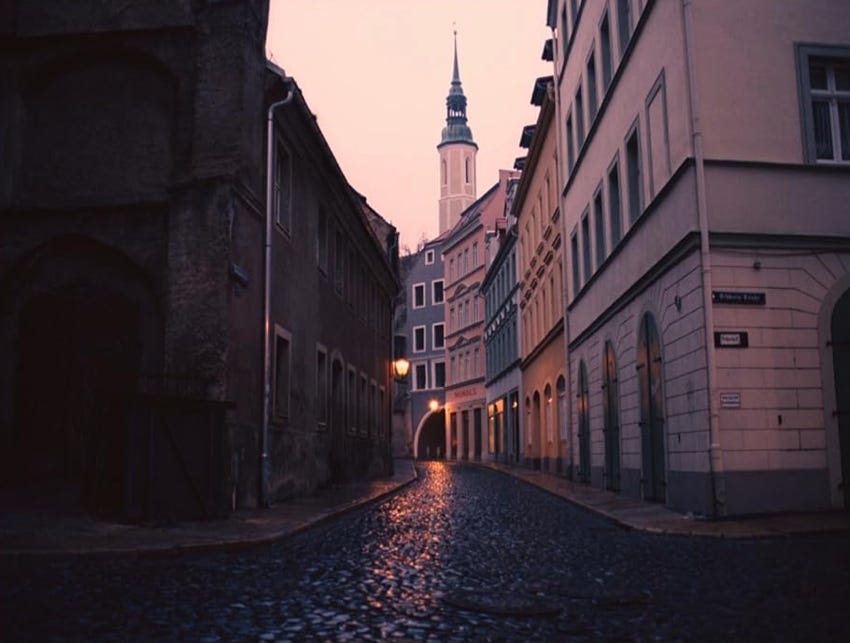The Grand Budapest Hotel: A Love Letter to “Old Europe”
Wes Anderson's film is an ode to a continent of crumbling empires, fading elegance, and a civil society constantly under siege by brutal modernity.
 |
But its message is far more than a fictional tale set in an idyllic town; it portrays the silent magic of the lost age of Europe, an era that you and I can’t remember, but can only dream about. A time of grace, poise, and quiet intellect. When arts and architecture flourished, crafting cities of vivid colors and draping arches, cobblestone streets and flurries of snow. The Grand Budapest Hotel creates a world not from the imagination, but from the clinging past of prewar Europe.
The film is set in the fictional town of Lutz in the fictional nation of Zubrowka, a metaphor for a prewar Central or Eastern European Country long before the Nazi regime or the common Euro. Wes Anderson told NPR that Lutz is “probably Budapest and Prague and Vienna rolled into one.” In the interview, he specified that visiting Prague himself was a major inspiration for the film, likely drawing from its pastel-colored Old Town and crumbling ruins.

At the film’s center is Monsieur Gustave H., played by Ralph Fiennes, a romantic and flamboyant concierge at the Grand Budapest Hotel, seemingly the last gentleman of the European ideal. He writes and recites poetry, maintains manners and etiquette, and seduces elderly aristocrats with an effortless grace. His knowledge of art and literature is unparalleled, and he treats all, even the most disregarded employees of the hotel, with the same smiling grace.
Beneath the film’s charming aesthetics of pastel colors, ornate details and the director's symmetrical, trademark shots is the reality that such perfection is fleeting; constantly under siege by encroaching military forces dressed in dull grey and fascist-style insignias draped from every surface. These intruders threaten every aspect of life that we hold dear, replacing tradition with cold indifference, the masters of renaissance art with canvases of circles and cubes, the ornate, artistic buildings demolished for stone slabs of brutalism. War breeds discomfort and anguish, replacing the sweetness of a centuries-old fairytale with a cold, sobering reality.
According to U.S. News, “‘The Grand Budapest Hotel(‘s) historical references are even more overt, as the circumstance(s) of WWI and WWII meet them in the middle of a fictional mid-1930s conflict. The geopolitical events are set in motion by what appears to (be a) Franz-Ferdinand-esque monarchy crisis.” It seems that the encroaching war is a blend of several European conflicts, vaguely paralleling the spread of Naziism and the Anschluss annexation. The old world that Anderson crafts is not meant to be historically precise, but emotionally true.
Anderson’s world echoes the plight of Eastern European countries as they were taken by the Nazi, then Soviet regime. The “ZZ” iconography in the film is a clear depiction of Hitler’s “SS” faction, used to expand his empire and intimidate other nations. The film, especially its climax, alludes to the real erosion of democracy in Eastern Europe, and with it, elegance and beauty.
This film, while showcasing a devastating narrative, is not a eulogy. “Old Europe” is still alive, not in its overwhelming grandeur but in the traditions and lifestyles kept today. Prague, Vienna, and Budapest all still echo the centuries of their past, their architecture preserved as landmarks and stories told in museums. Old Europe exists as long as those who cultivate it exist. We can only hope that in the near and far future, the fairytale endures, and the authoritarian regimes that once threatened it are left only as warning relics.
Sources
[1] U.S. News: Hints of History in ‘The Grand Budapest Hotel’, [2] NPR: Interview: Wes Anderson, Director of ‘The Grand Budapest Hotel’.
.jpg)
Comments
Post a Comment